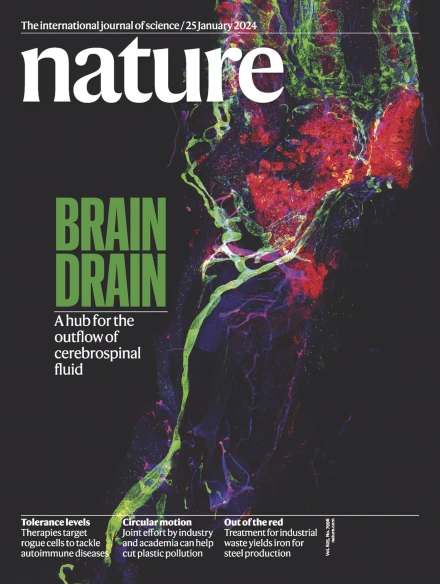野生稻和栽培稻的全基因组参考资料
IF 48.5
1区 综合性期刊
Q1 MULTIDISCIPLINARY SCIENCES
引用次数: 0
摘要
水稻(Oryza rufipogon)是亚洲栽培水稻的野生祖先,是水稻育种的重要资源1。在这里,我们提出了一个基于145个染色体水平组装的野生栽培水稻泛基因组,其中包括129个遗传多样性的水稻品种和16个不同的水稻品种。该泛基因组包含3.87 Gb的序列,而这些序列是大豆中所没有的。粳稻的履历。Nipponbare参考基因组。我们捕获了包含原始组合中缺失杂合信息的替代组合,共鉴定出69,531个泛基因,其中核心基因28,907个,野生水稻特异性基因13,728个。我们观察到野生稻中抗性基因类似物的丰度和多样性明显高于栽培稻。我们的分析表明,两个栽培亚群,籼稻和巴斯马蒂,是通过南亚栽培品种之间的基因流动产生的。我们还提供了强有力的证据来支持所有亚洲栽培水稻的最初驯化只发生过一次的理论。此外,我们在籼稻和粳稻之间捕获了855,122个分化的单核苷酸多态性和13,853个分化的存在-缺失变异,这可以追溯到它们各自祖先的分歧和粳稻存在更大的遗传瓶颈。本研究为加强水稻育种提供了参考资源,丰富了我们对水稻起源和驯化过程的认识。本文章由计算机程序翻译,如有差异,请以英文原文为准。


A pangenome reference of wild and cultivated rice
Oryza rufipogon, the wild progenitor of Asian cultivated rice Oryza sativa, is an important resource for rice breeding1. Here we present a wild–cultivated rice pangenome based on 145 chromosome-level assemblies, comprising 129 genetically diverse O. rufipogon accessions and 16 diverse varieties of O. sativa. This pangenome contains 3.87 Gb of sequences that are absent from the O. sativa ssp. japonica cv. Nipponbare reference genome. We captured alternate assemblies that include heterozygous information missing in the primary assemblies, and identified a total of 69,531 pan-genes, with 28,907 core genes and 13,728 wild-rice-specific genes. We observed a higher abundance and a significantly greater diversity of resistance-gene analogues in wild rice than in cultivars. Our analysis indicates that two cultivated subpopulations, intro-indica and basmati, were generated through gene flows among cultivars in South Asia. We also provide strong evidence to support the theory that the initial domestication of all Asian cultivated rice occurred only once. Furthermore, we captured 855,122 differentiated single-nucleotide polymorphisms and 13,853 differentiated presence–absence variations between indica and japonica, which could be traced to the divergence of their respective ancestors and the existence of a larger genetic bottleneck in japonica. This study provides reference resources for enhancing rice breeding, and enriches our understanding of the origins and domestication process of rice. A pangenome of wild and cultivated rice accessions captures the entire set of non-redundant genes and diversity in rice, and provides insights into the pathways involved in the evolution of rice.
求助全文
通过发布文献求助,成功后即可免费获取论文全文。
去求助
来源期刊

Nature
综合性期刊-综合性期刊
CiteScore
90.00
自引率
1.20%
发文量
3652
审稿时长
3 months
期刊介绍:
Nature is a prestigious international journal that publishes peer-reviewed research in various scientific and technological fields. The selection of articles is based on criteria such as originality, importance, interdisciplinary relevance, timeliness, accessibility, elegance, and surprising conclusions. In addition to showcasing significant scientific advances, Nature delivers rapid, authoritative, insightful news, and interpretation of current and upcoming trends impacting science, scientists, and the broader public. The journal serves a dual purpose: firstly, to promptly share noteworthy scientific advances and foster discussions among scientists, and secondly, to ensure the swift dissemination of scientific results globally, emphasizing their significance for knowledge, culture, and daily life.
 求助内容:
求助内容: 应助结果提醒方式:
应助结果提醒方式:


